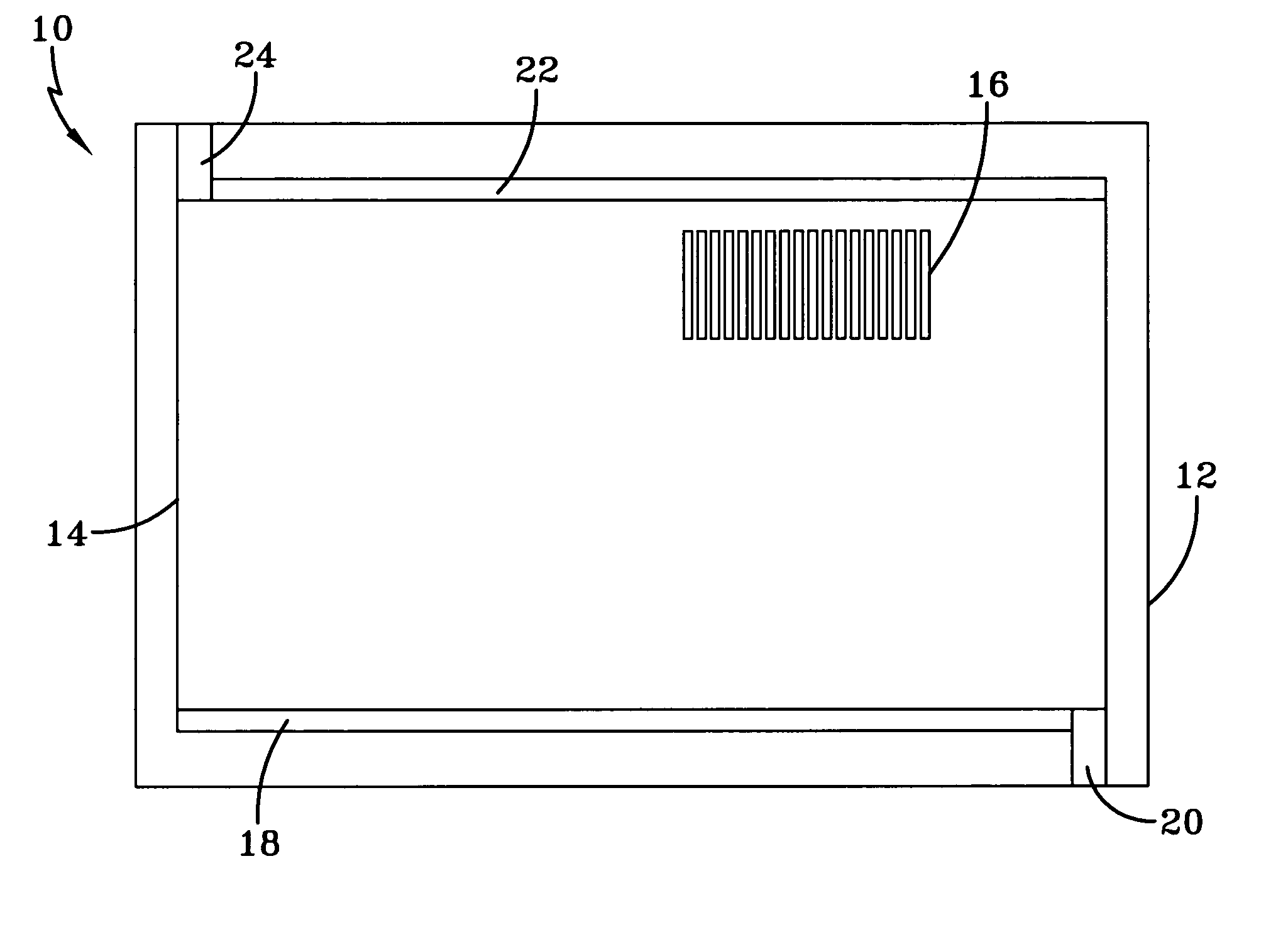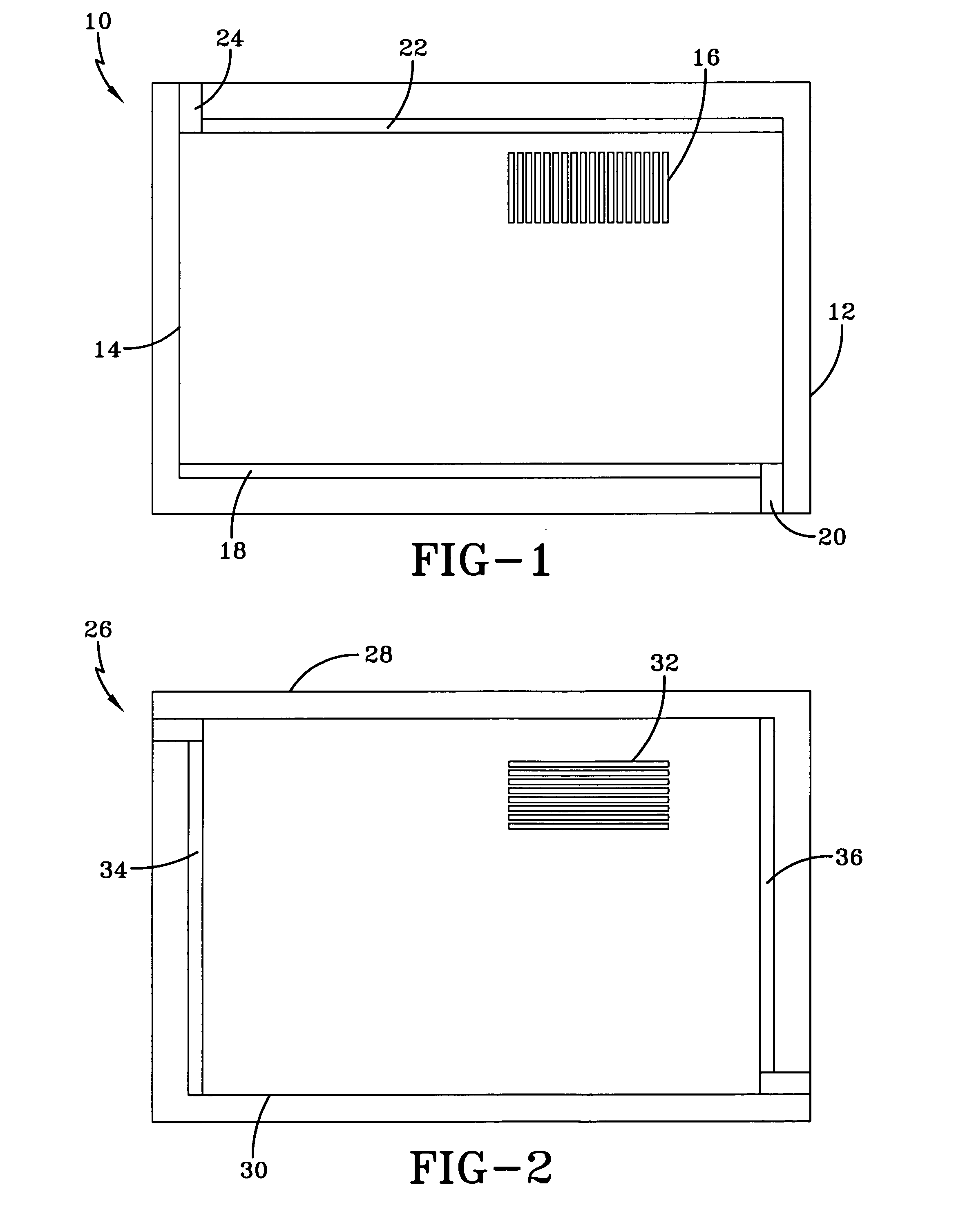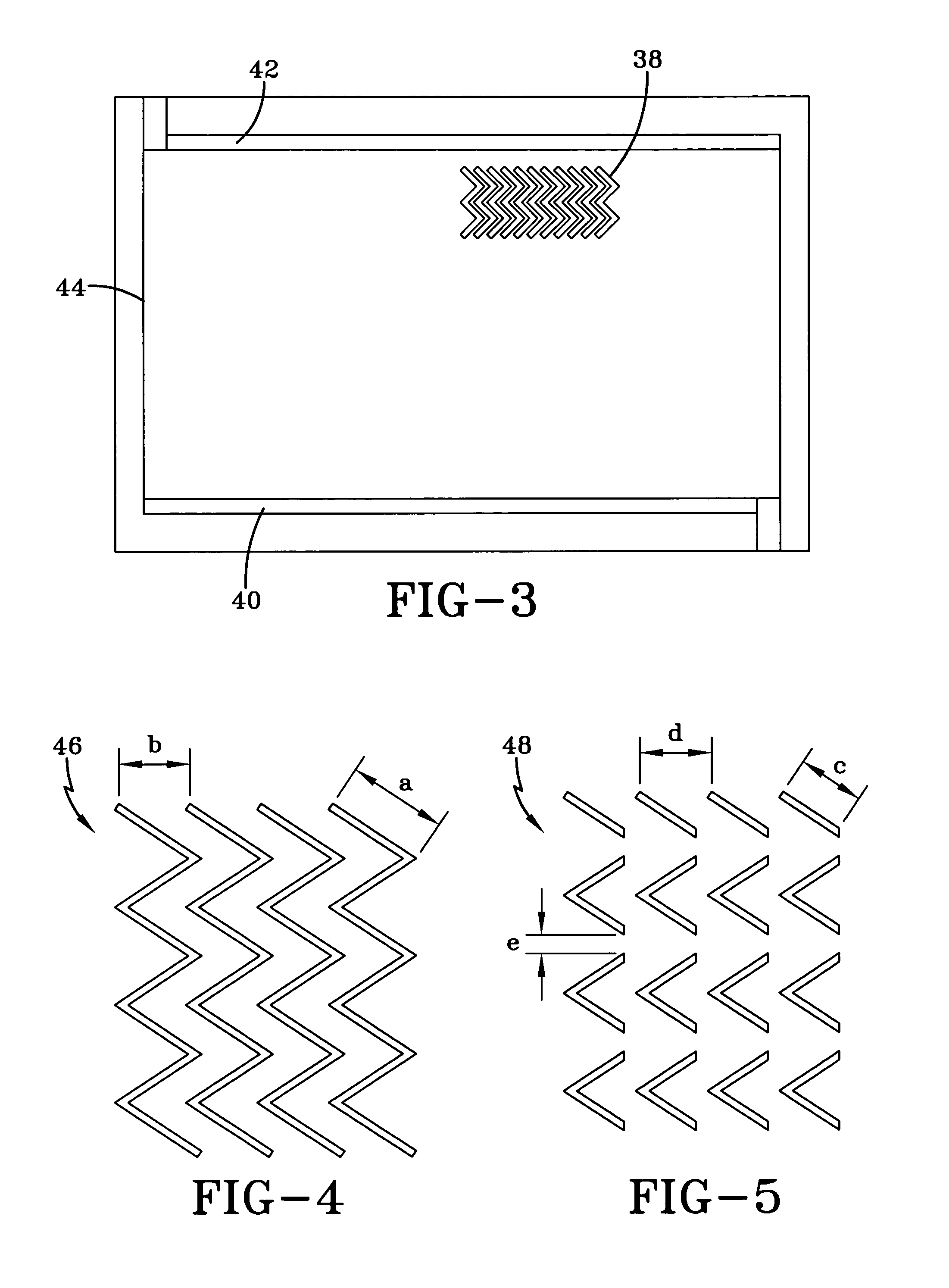Sidelobe controlled radio transmission region in metallic panel
a radio transmission region and metallic panel technology, applied in the field of radio frequency (rf) communication, can solve the problems of limiting or preventing the transmission of rf signals into and out of buildings, significant drawbacks of using metallic panels in windows and other applications, and limiting or preventing the transmission of rf signals. to achieve the effect of facilitating rf transmission and facilitating rf transmission
- Summary
- Abstract
- Description
- Claims
- Application Information
AI Technical Summary
Benefits of technology
Problems solved by technology
Method used
Image
Examples
examples
[0060] Multiple embodiments of the present invention have been tested. In summary, the testing shows that the theory of frequency selective surfaces as well as Fourier windowing techniques may be used to improve the transmission characteristics of an aperture of the present invention. With regard to FIGS. 10 through 17, test results are provided for both orthogonal (vertical) and parallel (horizontal) polarizations in the 500 MHz to 18 GHz frequency band. The results are based on simulations using a periodic moment method (PMM) computer calculation code. All data in these figures is normalized with respect to free space. In an actual window, there may be extra loss due to the glass which is not shown in these test results. Typically, a clear section of glass (e.g., about 5.4 mm thick) may cause about 2 to 3 dB of loss as compared to free space.
[0061]FIGS. 10 and 11 illustrate the transmission properties of one embodiment of an aperture of the present invention having broken, zigzag...
PUM
 Login to View More
Login to View More Abstract
Description
Claims
Application Information
 Login to View More
Login to View More - R&D
- Intellectual Property
- Life Sciences
- Materials
- Tech Scout
- Unparalleled Data Quality
- Higher Quality Content
- 60% Fewer Hallucinations
Browse by: Latest US Patents, China's latest patents, Technical Efficacy Thesaurus, Application Domain, Technology Topic, Popular Technical Reports.
© 2025 PatSnap. All rights reserved.Legal|Privacy policy|Modern Slavery Act Transparency Statement|Sitemap|About US| Contact US: help@patsnap.com



